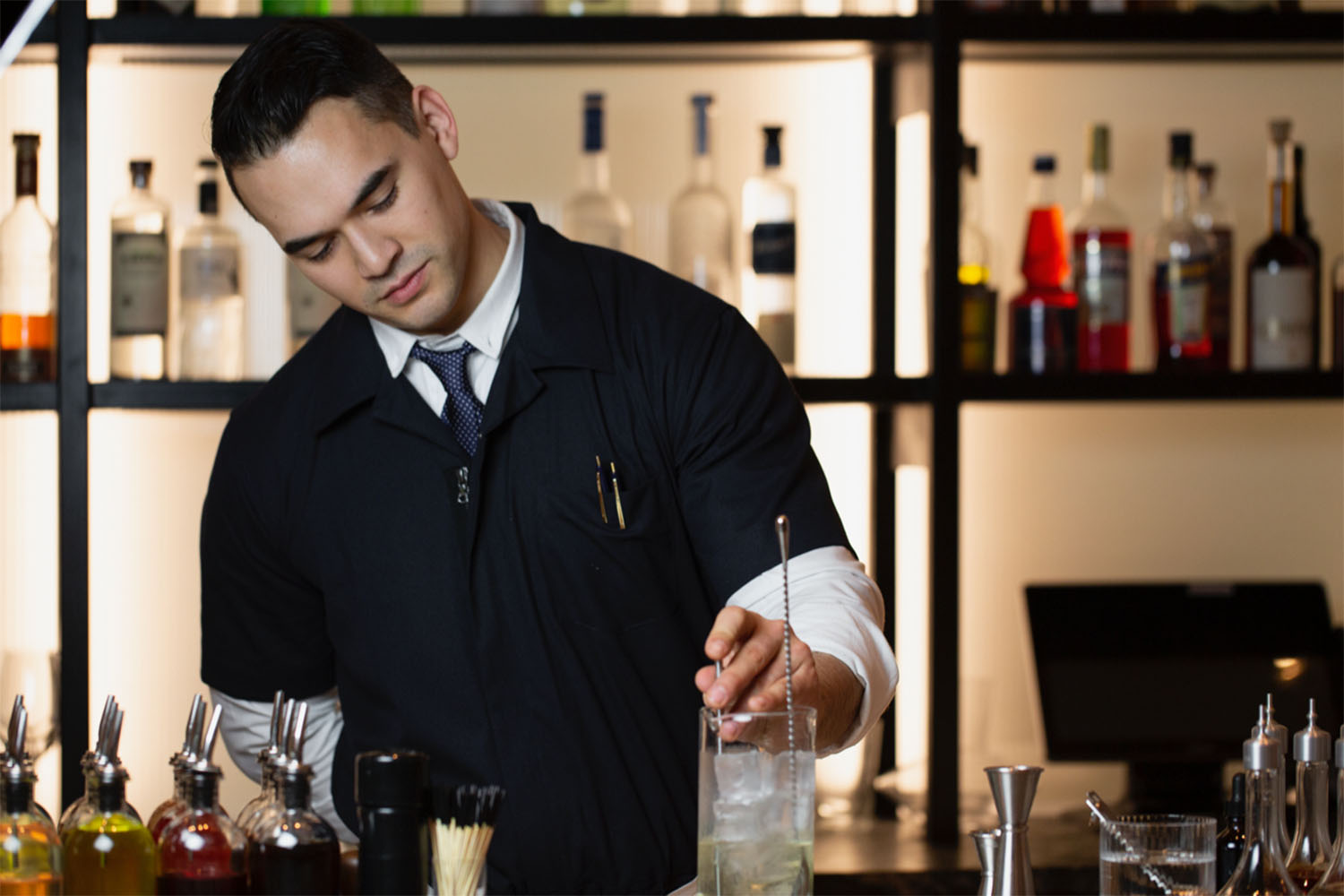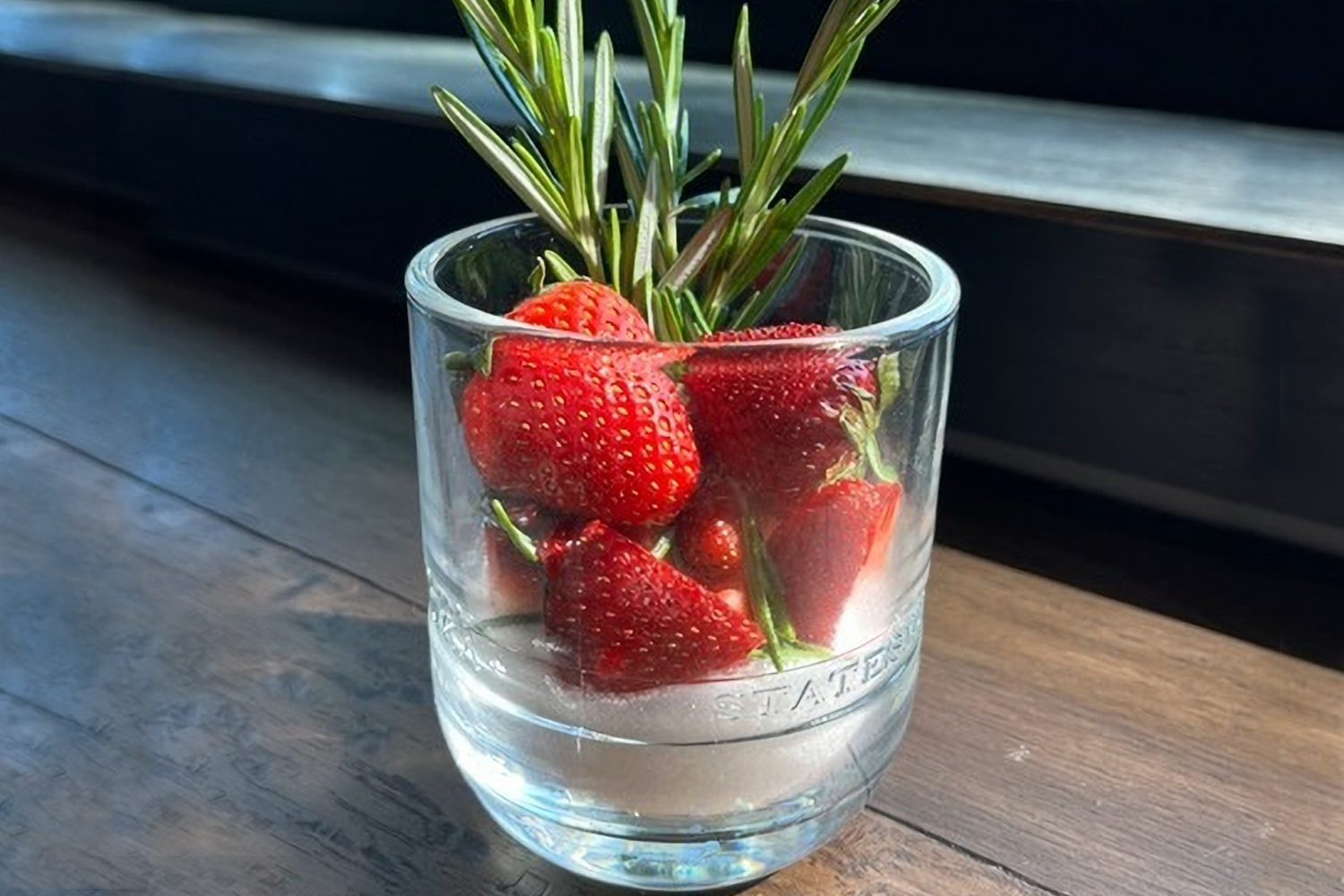How to Make Your Own Botanicals at Home
Our house bartender, Jonathan Lind, is back with drink recs that rejuvenate.
Oh, hello again, you wonder(cade)ful person! I’m Jonathan Lind — an NYC-based bartender — and today I want to give a shoutout to all the designated drivers, the sober curious, the parents of under-21s and the dry Januaryists who are still doing their thing well into May. This one’s for you!
Fun fact: historically speaking, alcohol’s primary purpose was that of healing. You know how that first cocktail after a long day at work feels restorative? Well, doctors in days gone by believed that alcohol literally had restorative properties. The many herbs and botanicals that were often infused into early spirits such as genever (a sort of proto-gin), amari (the broader category that includes the ever-growing-in-popularity Amaro) and vermouth (an infused and often fortified style of wine), were put into their respective brews with the intention of increasing their medicinal efficacy.
As I said above, I am a bartender. I am neither a doctor nor a nutritionist. But, I’ve been alive long enough to know a thing or two about a thing or two (especially when it comes to drinks and repetition). So, please, trust me when I say that the world of non-alcoholic drinking and botanicals is incredible. It allows us to open up our creativity and try a near-infinite number of recipes and explore the idea of balance (sweet, sour, bitter, etc.) in our drinks, without punishing our livers. Because while the health benefits of botanicals can be debated, the health benefits of decreasing alcohol consumption are crystal clear.
You can certainly buy delicious non-alcoholic botanicals — Seedlip, Optimist and Wilderton are easily available online — but today, I’m going to teach you how to make your own.
Tea Time
That’s right folks, your first and best option is sitting right next to you in your steaming mug of morning brew. Tea! Soaking things in hot water helps extract the beneficial terpenes, tannins and other molecules that give a cuppa its nearly mythical restorative reputation.
As anyone who’s been to a grocery store — which is to say, everyone under the age of billionaire — knows, there are myriad tea styles and flavors. Find yourself a smoky tea and brew up a heady concoction that’ll give a single malt scotch a run for its money. But you can use anything: the folks at Seedlip, for example, suggest everything from rhubarb to jasmine tea for their non-boozy cocktails.
But you’re not limited to store-bought teas. Nor, for that matter, tea. You can soak pretty much anything in hot water to brew something flavorful and potentially restorative. Do you have rosemary and a kettle? You’ve got rosemary tea! Your imagination is the only limit when it comes to brewing up your home tonics.
Dry stuff makes great tea. Fresh stuff, less so. When you soak fresh leaves, such as mint, in hot water, you get a beautiful burst of flavor initially. But as the mint continues to soak and you activate enzymes in the leaves they begin to break down the cellular structure and contribute to a “swampy” taste in your tea — so don’t brew fresh leaves longer than 5 minutes. And while fresh herbs or whole spices brew nicely, don’t use powdered spices; you’ll just end up drinking grit.
Shrub a Dub Dub
Another great option for botanical extraction at home is to make shrubs. I’m not talking about hedgerows — shrubs are a drinking vinegar, which is basically a concentrated syrup that combines fruit, sugar and vinegar, to which carbonated water is often added.
In olden days, these vinegars were the liquid left over from preserving the previous season’s crops. (Think pickle juice.) If drinking flavored vinegar sounds unappealing, think again. Here, let me explain…with a bit of a game. Neil loves this kind of thing:
Question: If vinegar is an acid, and sugar is, well, sweet, what common drink contains a secret recipe of herbs and spices, tastes acidic-yet-sweet and has a pleasing mouth-feel kick from carbonated water?
Answer: Cola, anyone?! Yep, we can trace our modern love of soft drinks back to our tradition of drinking shrubs!
When making shrubs at home, you can theoretically use almost any herb and spice (and any vinegar you find at the store, though I recommend apple cider vinegar), but if the end game is to drink it more or less unadulterated, you’re better off starting with something that’s got some intrinsic nutritional value and has a reasonably pleasant taste on its own.

Jonathan Lind's Strawberry Shrub
Servings: 1 Strawberry Shrub
Copy Ingredients
Ingredients
- 1 qt strawberries, roughly chopped, with greens removed
- 2 cups white sugar
- Rosemary sprigs (FYI, rosemary is known to serve as an anti-inflammatory)
- Cinnamon sticks, lightly crushed (cinnamon is known to have powerful anti-oxidative properties)
- 1 cup apple cider vinegar — cloudy is best (oft referred to as “with the mother”, nothing to do with NPH’s long running CBS sitcom)
- 1.5 oz Strawberry Shrub
- 6-8 oz Club Soda
- 2 containers, preferably glass, with lids
- A fine strainer or cheesecloth
- Muddler or metal spoon
- Whisk
Directions
Copy Directions
-
-
In a glass container with a lid, combine the strawberries, sugar, cinnamon and rosemary.
-
Muddle together until the strawberries have released their liquid and the rosemary has become fragrant. Let sit overnight in the fridge. While this is happening, the sugar will continue to extract liquid from the strawberries and essential oils from the rosemary and cinnamon.
-
The following day, add your 1 cup of vinegar directly into the glass container with the strawberry concoction and let it sit for about an hour.
-
Strain the liquid through your mesh strainer or cheesecloth into the second glass container.
-
Whisk to incorporate any remaining sugar crystals.
-
Combine all ingredients in a highball glass full of ice. Lightly stir and enjoy!
-




